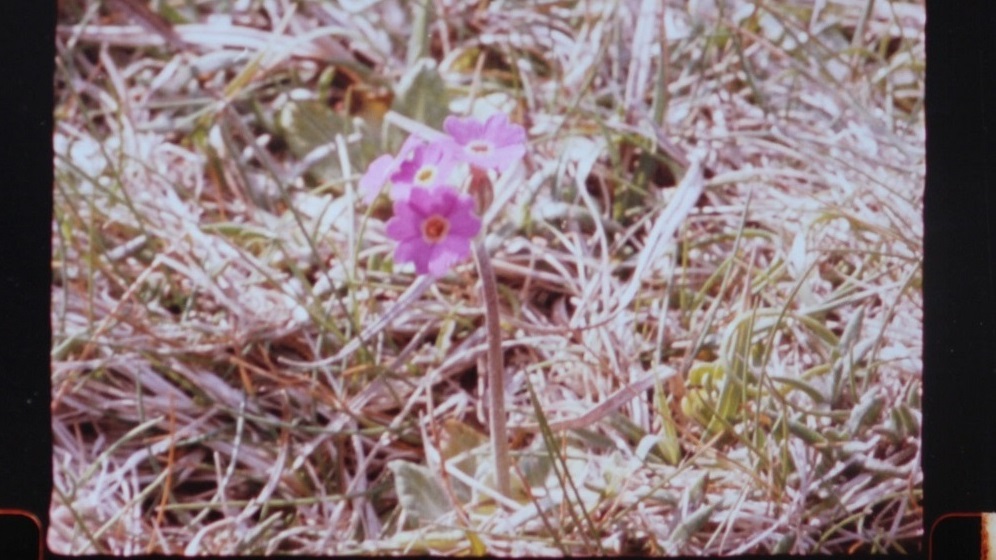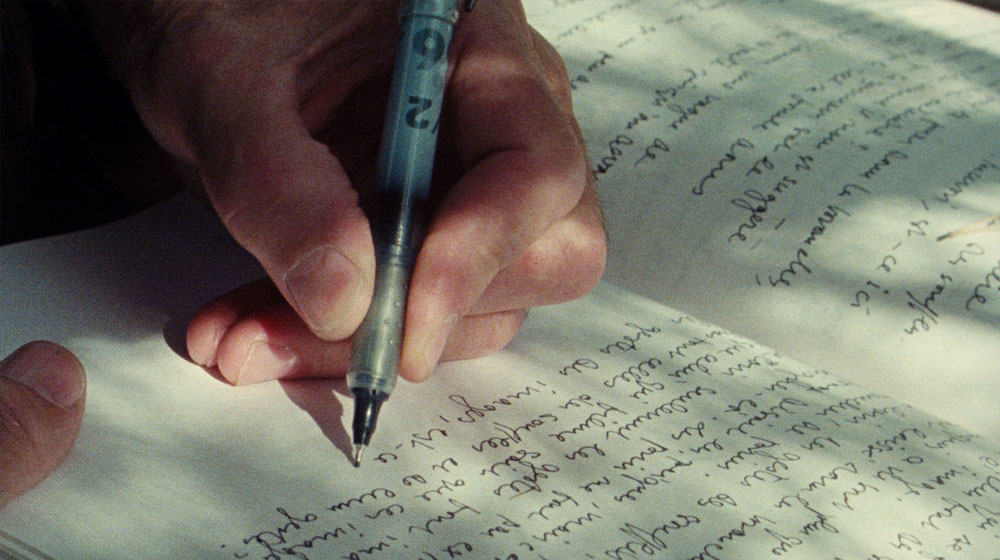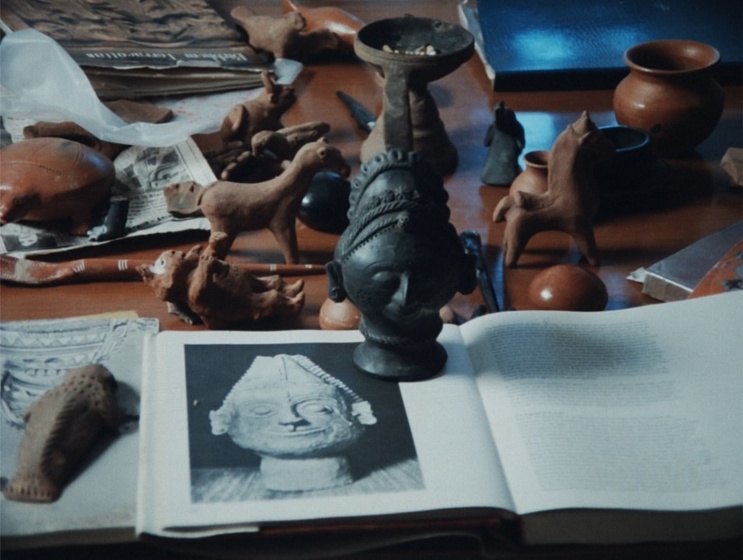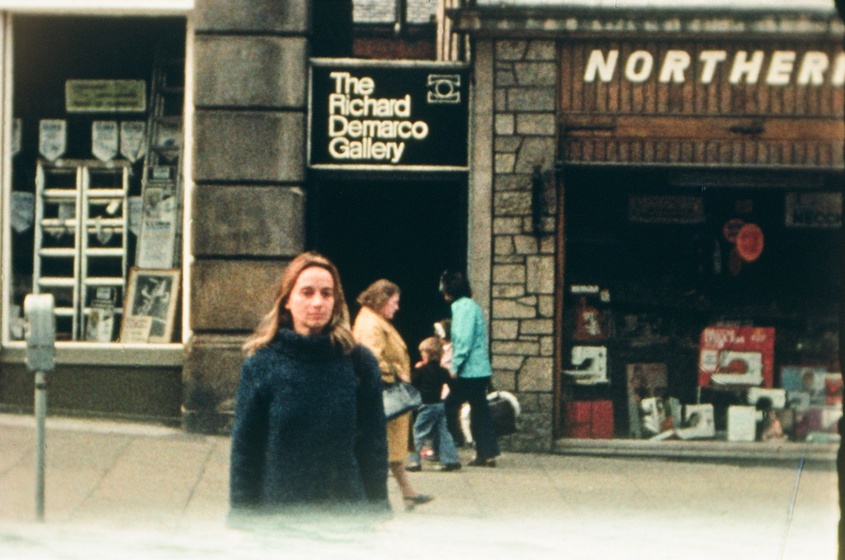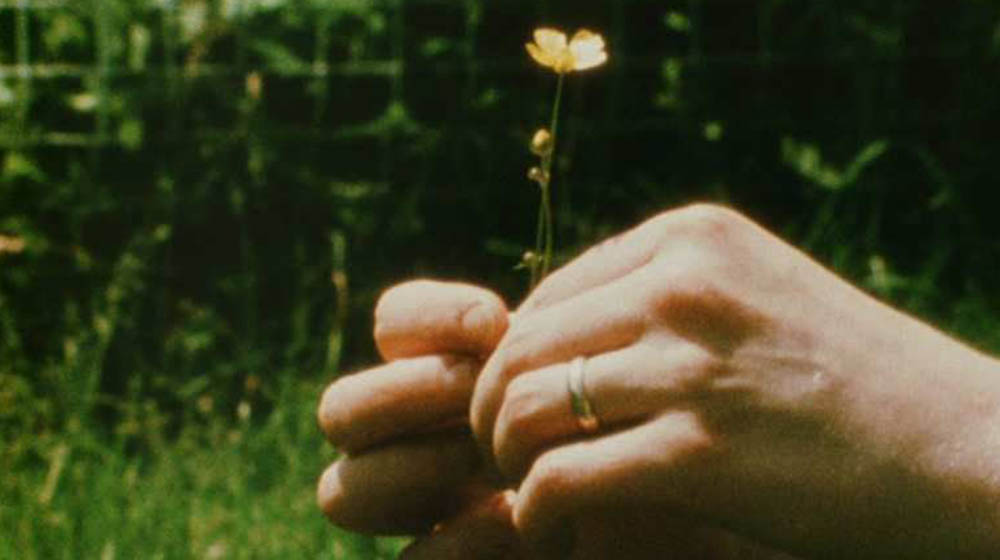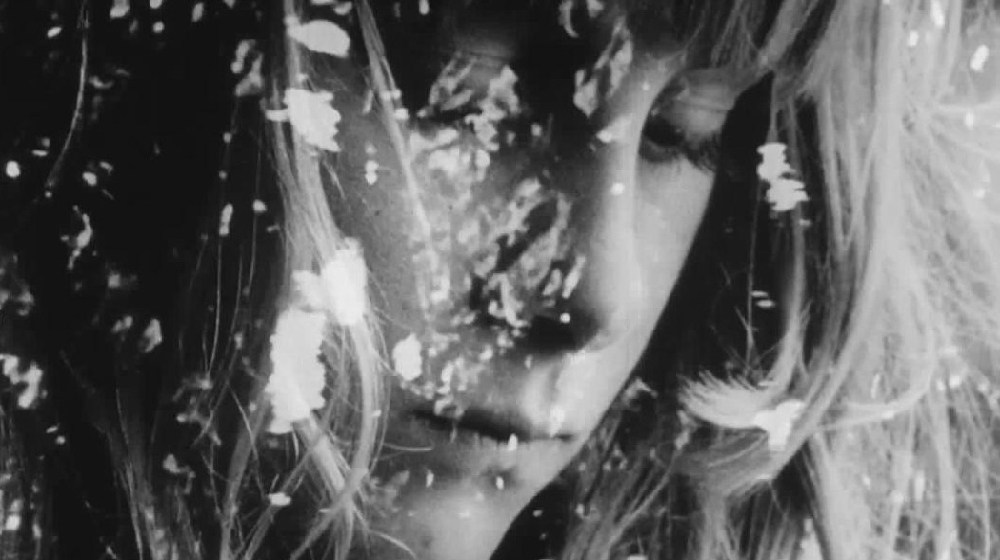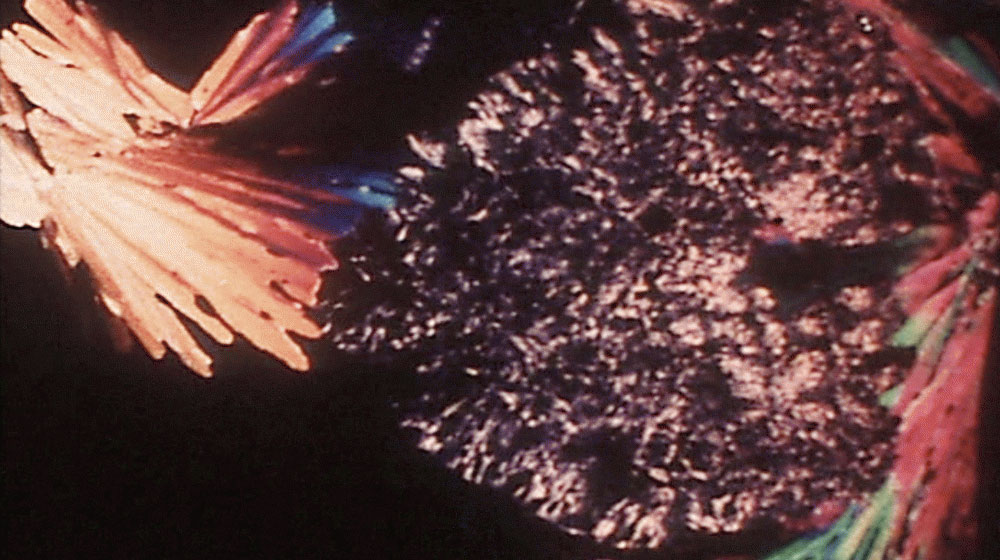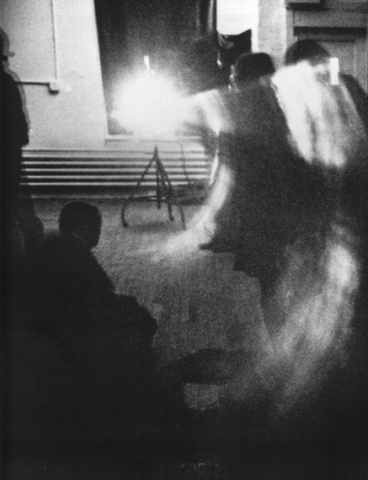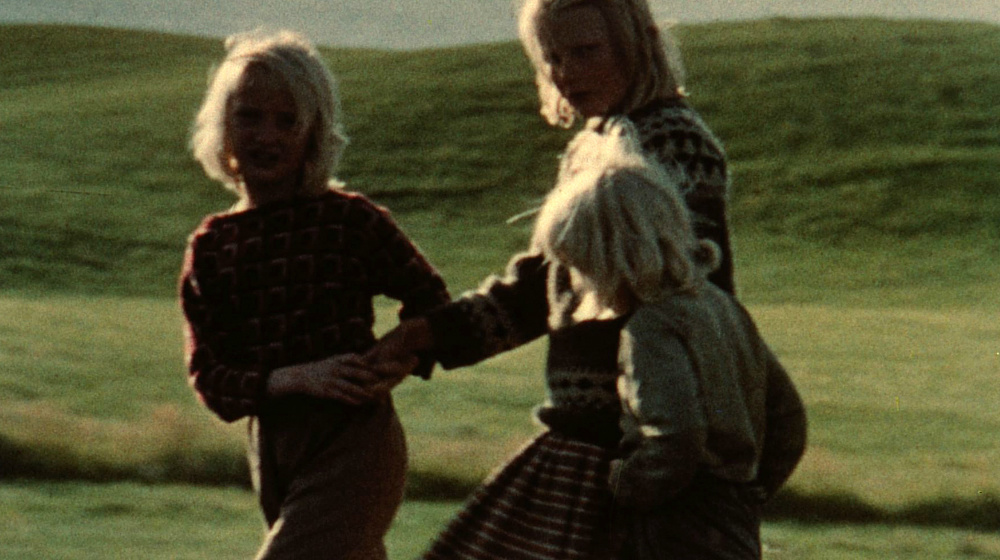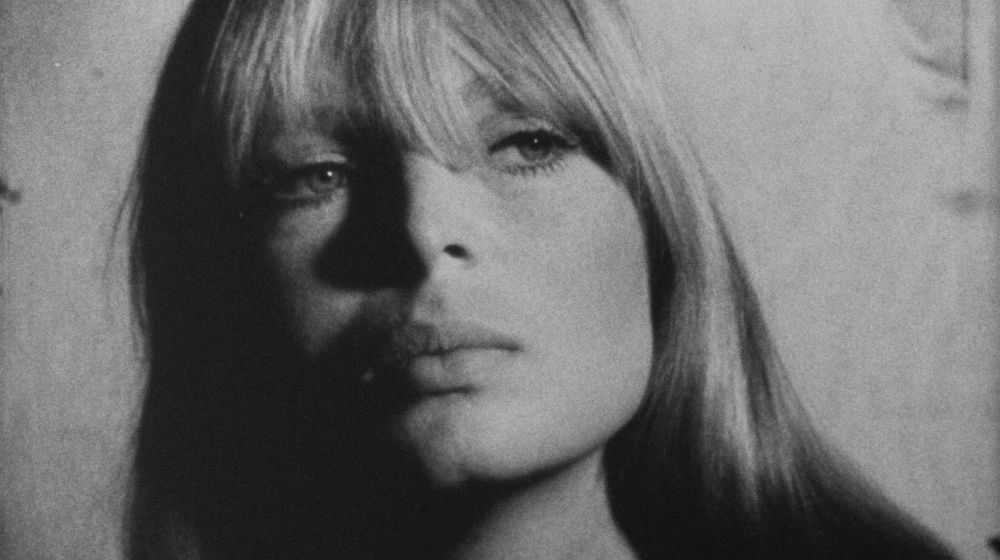In a scene from Blue Black Permanent (1992), the poet Greta is astonished to discover a small delicate plant on one of her walks in the countryside, namely the Scottish primrose or Primula scotica, which only grows in a few coastal areas in the north of Scotland: "You have to go a long way to find it, and even then, it might elude you" (Sarah Neely, in her reference book on Margaret Tait). As So Mayer points out, "a self-fertilising plant requiring the balanced growing conditions of well-grazed grasslands, the Scottish primrose is scarce today, affected by changes to traditional farming, and house-building". In the film, Greta weeps as she contemplates it, and the scene ends with a close-up of the primrose being moved by a strong wind.
The image of this plant provides us with a possible centre of gravity for the lyrical cinema of Margaret Tait, a Scottish filmmaker born on Orkney: the exploration and search for something that's modest and fragile but nonetheless marvellous; a small visible reality that isn't documented or classified but in which a world of its own is sought and extended, its poetic amplification; a presence that, by its very fragility, manifests and suggests something ungraspable, as if it could be destroyed by merely touching or trapping it; a figure exposed to the erosion of time and threatened by its context.
Based on this image, I'd like to dedicate these lines to the ecological dimension of Tait's cinema, focusing on her poetic practice and reflection through film. It's widely known that most of her work was self-financed (her three books of poetry published between 1959 and 1961 as well as her films); that her cinematographic work was relatively overlooked and little appreciated during her lifetime and that she only managed to finance one of the feature films (Black Permanent) on which she worked; that she almost always filmed (from her student years in Rome until her last film Garden Pieces in 1998, i.e. for half a century) using a 16 mm Bolex and three lenses (25, 75, 15), at first always on a tripod at first but later also holding it (and it's a heavy instrument) between her head and her heart; that she made almost all her films on her own, editing at home on her Moviola, with precarious finances and within those structural and formal limits (three-minute reels), recording the sound separately, in patient, meticulous contact with the laboratories to which she sent the films, always monitoring first-hand (in the most artisanal sense) all parts of the process; that, by going through her films, we discover how she learned to handle this instrument, its possibilities, nuances and variations but always on an intimate scale, without rhetorical or exhibitionist effusion; that all her work prioritises process over product, so that it's created and intertwined in a constellation, a library, a desk, through notebooks, drawings, visual and sound documents, poems, edited and discarded material, in which transference occurs - such as shots that are reused in several films - and in which a sketch is a creative form that's privileged rather than subsidiary, perhaps because there's no desire for a "great work" or hierarchy (something infrequent among filmmakers); that this idea of constellation is beautifully studied by Luke Fowler in his film about the filmmaker, Being In A Place (based on Tait's unfinished project Heartlandscape), and also by like-minded filmmakers and their small "community", such as Ute Aurand (in 2020 recovering film of a visit she made to Tait in 1995) and Peter Todd (who inherited the filmmaker's Bolex), who composed his short A Spoon from two shots of a spoon in which two states of light and the passage of time are reflected and encompassed; that, in this approach to the world, Margaret Tait liked to quote Lorca (whom she translated without knowing Spanish) and took as a precept his idea of "stalking the image" (Lorca: 'For Gongora, an apple is no less intense than the sea, a bee no less astonishing than a forest. He takes his stand before created Nature with penetrating gaze and admire an identical beauty which equates all forms. He enters what may well be called the universe of each thing and matches his sensibility with the sensations which surround it. For this reason, the apple and the sea evoke the same response; for he knows that the world of the apple is as infinite as the world of the sea'. And so on. 'Gongora treats all materials in the same scale;'... 'The poet must know this'), that she liked to recall what Tamberlini said over and over again to student actors: "Beware of approximations, go to the heart of what is, examine each character, each situation for itself, each time", in other words, based on the here and now, without using preconceived ideas to read the other person (in her poem "Seeing's Believing and Believing's Seeing", she writes: "I don't have to know what it's all about. / That's not what I'm trying to know / It's the looking that matters, / The being prepared to see what there is to see / Staring has to be done. That I must to do / I don't want to know why I do it / - I might want to know, but I know I'd never know that, no matter what - / But I know I have to look and look / And see what I can see / And the people I like are the people who look".
If we see cinema as an encounter with the world, with otherness, or as a way of sensitising ourselves to other subjectivities, other points of view regarding which we generate empathy, sometimes unexpected or even contradictory, then we'll agree that cinematographic images are an opening to our potential lives (many are overlooked and shall remain so), or to the many different subjectivities of each spectator, as opposed to their construction - as tends to be imposed by society and education - as a homogeneous self or an opaque mask. Tait begins her poem "Trust" thus: "I like you to extend out in all your endless possibilities / I like you to inhabit the multitudes you contain". And this idea, which implies the attitude of listening, runs through all her cinema, as well as the exploration and long journey that leads to that little flower. Think of her portraits, such as one of her earliest, Three Portrait Sketches (1951), shot when she was still a student (together with fellow students Fernando Birri and Peter Hollander), in which people are filmed at moments of reading, introspective reflection and also festive simulation, imagination, fanciful projection and shared joy, using a sketched and possible set of images that intermingle with water, statues and other balanced and conjugated presences in an unfinished, fluid, open and permutable form.
Tait's patient, sustained and meticulous work is therefore created within that mysterious place between poetry, film and photography, exploring the specificity of each medium but also the dialogue and common substratum, so that it's threaded (through echoes) by means of association with landscapes, places, people: her own garden, house, workshop or corner of the world (Orkney in particular) in which the filmmaker chooses to remain and explore (as opposed to the temptations of London, the capital, which film always tends to move towards), and not to segment it.
In her diary she noted, on the 4th of July 1949, that she had spent two and a half hours photographing the opening of a poppy in stop motion: "For a few minutes I just stood by the camera and almost felt the time going by, participated in the flowers opening. I was especially conscious of the character of the light minute by minute (...) I had a particular feeling of identification of place with place and participation because of the exactness with which I was observing the time passing. Watching the light acutely because of my exposure for one thing. I remember how determined I was some time in my childhood to really see the clover closing up, feeling sure that if I kept on looking I couldn't fail to see, and being disappointed because I never did but putting it down to the fact that I never had the patience to keep on watching, not perceiving how the movement could be imperceptible".
In 1958, she recaptured that experience in the beautiful poem "Now":
I used to lie in wait to see the clover open
Or close,
But never saw it.
I was too impatient,
Or the movement is too subtle,
Imperceptible
And more than momentary.
My five-year-old self would tire of waiting
And when I looked again
– All closed for the night!
I missed it
Once more.
Cinematographically
I have registered the opening of escholtzia
On an early summer morning.
It gave me a sharp awareness of time passing,
Of exact qualities and values in the light,
But I didn’t see the movement
As movement.
I didn’t with my own direct perception see the petals
moving.
Later, on the film, they seemed to open swiftly,
But, at the time,
Although I stared
And felt time not so much moving as being moved in
And felt
A unity of time and place with other times and places
Yet
I didn’t see the petals moving.
I didn’t see them opening.
They were closed,
And later they were open,
And in between I noted many phases,
But I didn’t see them moving open.
My timing and my rhythm could not observe the
rhythm of their opening.
The thing about poetry is you have to keep doing it.
People have to keep making it.
The old stuff is no use
Once it’s old.
It comes out of the instant
And lasts for an instant.
Take it now
Quickly
Without water.
There!
Tomorrow they’ll be something else.
Afterwards, this experience underlies many of her shots. In her work to make calculation rhyme with intuition, in her detailed attention and sensitivity to the ephemeral and small things in the world, Margaret Tait found, in the film camera, an instrument that made it possible to see the imperceptible, the movement of petals opening that the eye couldn't see; her images, or her search for the image that transcends and elevates both aesthetically and spiritually, are formed between that experience as a child and her filming of the fragile primrose at the end of life,: "The contradictory or paradoxical thing is that in a documentary the real things depicted are liable to lose their reality by being photographed and presented in that 'documentary' way, and there's no poetry in that. In poetry, something else happens. Hard to say what it is. Presence, let's say, soul or spirit, an empathy with whatever it is that's dwelt upon, feeling for it, to the point of identification" (Margaret Tait).
This link with the primordial experience represents the core of the cinematographic ecosystem defended by Margaret Tait in her small workshop on the islands of Orkney, far from the neoliberal supermarket and saturation of visual productions that exhaust our vision and bodies, in a modest attempt to immerse cinema in the cycles of nature, the movements of light, a reencounter with what is rooted, and to ensure that it regains or doesn't lose sight of that awakening of the gaze; there, creativity unfolds in a horizontal, tentative and egalitarian way through all the gestures and all the stages of the creative process because it's concerned with a way of being and of relating to and playing with the world; those gestures - bringing us that concealed plant - are passed on from the old to the new world.
Gonzalo de Lucas
